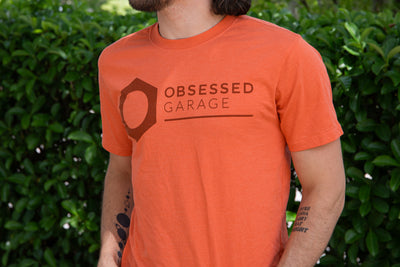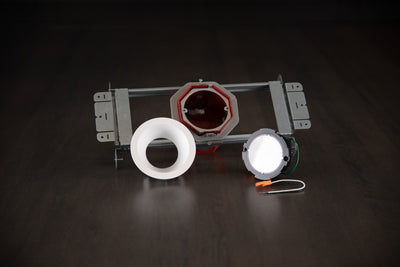How To Do A Winter Season Car Wash

I haven’t had to do a winter car wash in a very long time - living the good life here in Florida. Admittedly, it’s always difficult for me to understand the plight of car care enthusiasts living in climates with snow, brine, and salt on their roads. I never have to worry about the water freezing my door handles, windows, or gas tank door shut. I don’t have to think about anti-freezing chemicals like rock salt or salt brine eating away at my car's body or frame.
However, for all of my up-North OG followers, I thought it was a good idea to address winter season car washing and cold-weather washing methods you can take to keep your vehicle(s) dialed in. I decided to ask some of the OG Crew and interns from wintery areas how they wash(ed) their cars in colder climates and help me develop a process that would be effective. It’s been a while since I’ve done it and lived in it, but I do have an idea of what I’d do. Below, I’ve listed out a few different options.
Option 1 - APC Pre-Rinse Before You Foam
In the OG wash process, I start the car washing process with a rinse after I’ve finished cleaning the wheels, tires, and wheel wells. However, if your vehicle has been exposed to winter climate and all the things that follow, like salt, brine, and slush, we recommend starting the wash process with an all-purpose cleaner.
Using an all-purpose cleaner in a spray bottle or pump sprayer (at a dilution of 10:1) before rinsing will allow the salt, brine, and other snow-associated crap to mostly be pulled off the paint before the mechanical wash. The more chemically aggressive nature of the all-purpose cleaner will also help neutralize the salt better, leaving less behind. This solution helps prevent rusting or corrosion of your car’s surfaces. Here is a simple modification to my wash process to help address winter conditions:
- Pre-treat the paint prior to rinsing. Depending on the severity of salt and grime buildup, you can dilute the all-purpose cleaner anywhere from 10:1 (ten parts water to one part all-purpose cleaner) to 4:1. Usually, the all-purpose cleaner should work fine at a dilution of 10:1, but a stronger dilution up to 4:1 can be used safely
- Allow the all-purpose cleaner (APC) to dwell. Here, we want to give the APC plenty of time to work without letting it dry. When the all-purpose cleaner is about to dry, either re-apply it to prevent drying or rinse the car. Most of the time, rinsing should be more than sufficient if the all-purpose cleaner sat for more than a couple of minutes.
- Rinse the car. Now that the APC has done its job, rinse the car, and continue with the traditional car washing procedure. We provide other wash options below, such as using a decontamination soap in the process and rinseless if these better suit your circumstances.
We recommend pre-treating the door jambs with the all-purpose cleaner in this part of the process. Anyone who has ever owned or seen a vehicle that lives in the snow will likely know that rust and degradation start to occur in the door jambs first. Since the salt, brine, and water from the road are often left to eat away at these areas because they usually get the least attention.
Simply add the door jambs to the pre-treat process. If you prefer not to get your interior soaked while rinsing them, or have trouble controlling pressure washer overspray, use a pump sprayer or a spray bottle with rinseless wash to flush out the door jambs after an APC pre-treat. If residue lingers from either chemical, simply run the pressure stream between the seam while performing the rinse.
Provided your door seals do not leak, and you keep the pressure washer within normal, safe washing distance from the paint, your door jambs should be rinsed clean without getting your interior wet.
Option 2 - Decon Soap Wash
Another simple modification to the wash process for snowy conditions you can use is to perform the same wash process as usual, but with a decontamination soap onto a dry paint surface, allow it to dwell, and then rinse before foaming again. This will allow for a similar pre-treat to all-purpose cleaner, helping to neutralize the salt and get as much junk off your car as possible before the contact wash.
So, if you’re out of APC, you aren’t screwed. If you prefer, you can use a pH-neutral soap during the remainder of the wash process. However, sticking with your decon soap for the entirety of the wash is acceptable. Keep in mind that using a decontamination soap could shorten the life of your protection if it is a car protected by wax or sealants. However, it likely will not make much of a difference in durability unless you use this method more than a few times a year.
Option 3 - Rinseless/Waterless Washing
If you happen to be in an environment where you cannot do a final rinse of the car or are not able to use water due to freezing temperatures, this option is for you. If you can pre-rinse, it is likely best to follow the all-purpose cleaner pretreat method to help reduce the amount of grime on the surface. However, if you do not have access to running water, a waterless wash is always an option. Simply use a pump sprayer or spray bottle to “pre-soak” the paint and door jambs to flush the surface. Use a liberal amount of presoak to clear as much junk as possible; then you can continue with the normal OG rinseless wash method.
My last piece of advice would be to NOT rinse your car in freezing temperatures. If you go outside to rinse your car with a cold water pressure washer and cannot thoroughly dry the vehicle, do not rinse. You will need a heated garage to let the car thaw out for you to dry it. Your gas tank door, door handles, and windows can freeze, creating damage or just making your life harder.


